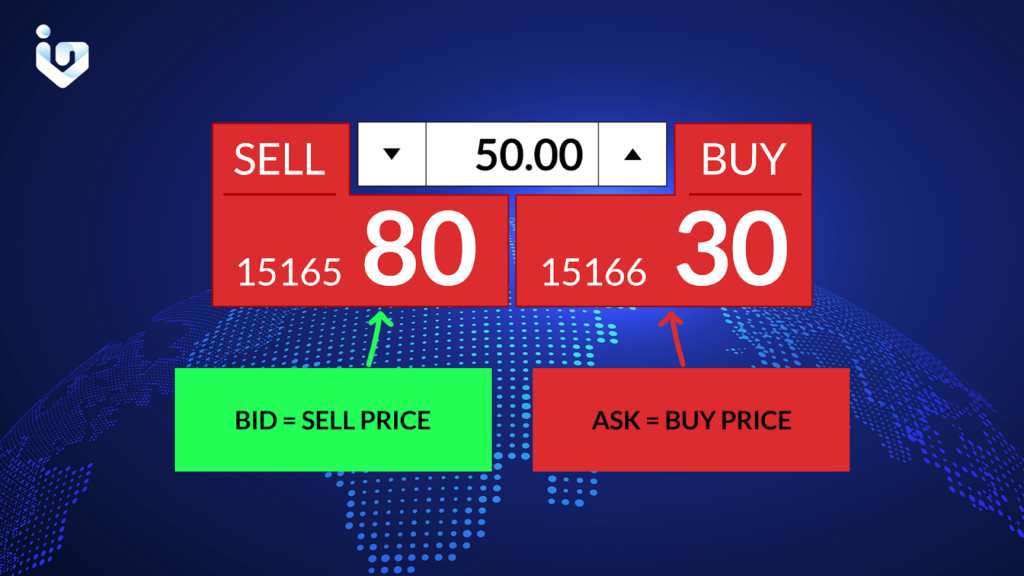One of the greatest marketplaces in the world is the foreign exchange market, or forex market. It is a worldwide decentralized or over-the-counter market where currencies are traded. When venturing into the Forex market, it is best to learn the basic forex terms. These forex terms should be kept in mind to help you not get confused during trading. There is a lot to learn about forex terms, so below are some of the basic terminologies to help you get started.
Currency Pair
A price quote between two distinct currencies is referred to as a currency pair in the foreign exchange market. A currency pair’s first listed currency is referred to as the base, while the second listed currency—which serves as the benchmark—is known as the quote.
Base Currency
The first currency in a forex pair quotation is referred to as the base currency. One currency will always be quoted in relation to another on the foreign exchange market because you are buying one while selling the other.
The second currency, also referred to as the quote or counter currency, will appear after the base currency.

Let’s have a PHP/USD pair as an example. The base currency is the peso and the quote currency is the US dollar. If the price of the PHP/USD pair is 0.87, it means that you would need $0.87 to buy a single peso.
Quote Currency
Quote currency is the second currency included in a forex pair. This forex term also goes by the name of the counter currency.
The cost of buying one unit of the base currency by selling the quote currency is reflected in the price of a forex pair.
USD is the quote currency in the pair PHP/USD.
Exchange rate
An exchange rate determines the price at which one currency will be exchanged for another and has an impact on international trade and money transfers. In the Philippines, the exchange rate is typically stated as the peso equivalent of one US dollar. For instance, P59 Equals $1 US.
Ask Price
The price displayed on the right side of a quote is the ask price, which is also referred to as the offer price. This is the cost at which the base currency can be purchased. The offer price, as seen from the market maker’s perspective, is the price at which they are prepared to sell the underlying.
The bid price is marginally lower than the market price, whereas the offer price is marginally higher.
Bid Price
Bid Price is the cost at which a currency pair can be sold. This forex term, as seen from the market maker’s perspective, is the cost at which they are prepared to purchase the underlying asset from the trader.
While the offer price will always be marginally higher than the market price, the bid price will always be marginally lower.

Spread
The Spread is known as the difference in pips between the ask price and the bid price. Transaction fees are replaced by the spread, which stands in for brokerage service expenses.
Appreciation
Appreciation is an increase in the value of an exchange rate. For a variety of factors, including governmental policy, interest rates, trade balances, and business cycles, currencies appreciate against one another.
Depreciation
Depreciation is the decrease in the value of an exchange rate. Political unrest, interest rate differences, weak economic fundamentals, and investor risk aversion are a few examples of the causes of currency depreciation.
Gapping
A price that opens much higher or lower than the previous day’s close without any trading taking place in between. This forex term implies that a limit or stop order may be filled at a price other than the one at which it was placed.
Pips
The smallest price change that a currency exchange rate can make is called a pip, which stands for “percentage in point.” This forex term measures how much a currency pair’s exchange rate has changed in the forex market. Pips are the units used to measure market gains and losses.
Lot
Forex is typically traded in lots. The base currency is divided by 100,000 to get the size of a typical lot. It is frequently impractical to trade just one unit of a given asset or security due to its actual worth. In these situations, traders will utilize lots, which are predetermined quantities of a specific item that are bought or sold in each transaction. An “odd lot” is one where the position size differs from the standard lot size.
Leverage
With a little initial investment, an investor can use leverage to expand their trading power and control a larger position on the market. Leverage works by increasing your exposure to an underlying asset by using a deposit, also known as margin.

Equity
Equity refers to the entire amount of money, including your profit and loss, that is in your trading account. Your equity would be PHP 70,000, for instance, if you invested PHP 50,000 into your account and you also made a PHP 20,000 profit.
Margin
Margin is the minimum deposit needed to maintain an open position. This forex term is a security deposit that the broker maintains while a forex trade is open rather than a transaction fee.
Used Margin
It is the sum of money set aside by your broker to ensure that you don’t wind up with a negative balance and may continue to trade in your open positions.
Free Margin
Free Margin is the amount of money in your trading account with which you can open new trading positions. You must deduct the margin from your open positions from your equity in order to calculate free margin.
Margin Call
When a trader receives a notification that the capital in their account is insufficient to maintain an open position, it is known as a “margin call.” This forex term may force the trader to exit positions to lower the required maintenance margin or provide additional funds to balance the account.
Stop loss
The term “stop loss” isn’t just solely a forex term; it’s also widely used among traders of all markets. A stop loss order is a risk management technique that enables the closing of a position once it reaches a certain predetermined price. If prices continue to move in the investor’s negative direction, this helps guard against more losses on an open investment. Please be aware that, due to slippage, placing a standard stop loss order does not ensure that you will be filled at that specific market price.
Take profit
Same with “stop loss,” this forex term is also used by traders from various markets. As a risk management tool, a take profit order enables a position to be automatically closed after it achieves a certain predetermined profit target. This can guard against losing money if the price suddenly changes direction before the investor can close the bet.
Profit/Loss
The amount of money received from realized (closed) trade positions after a transaction.

Now You’re All Set!
It seems like there’s a lot, right? Well you don’t need to worry about it, because once you’ve familiarized yourself with these terms, it’ll just get easier.
We hope that you’ve learned forex terms, and remember, don’t stop learning new things! There’s more terms to learn along the way and more familiarizing needs to be done. Keep that grind up and you’ll be a successful trader in no time!
TRACK FOREIGN FLOWS ON INVESTAGRAMS
We have a new update coming your way, InvestaPrime Elite subscribers!
A long time request we’ve been getting is for you guys to be able to track the positioning of the foreign funds in the local market. With our newest feature you can now:
See what foreign funds are buying and selling
See the foreign funds composition in stocks you’re monitoring
You can now find a new edge in the markets
Check out our foreign flows tracker here: http://invs.st/IVGWForeignFlowsTL

